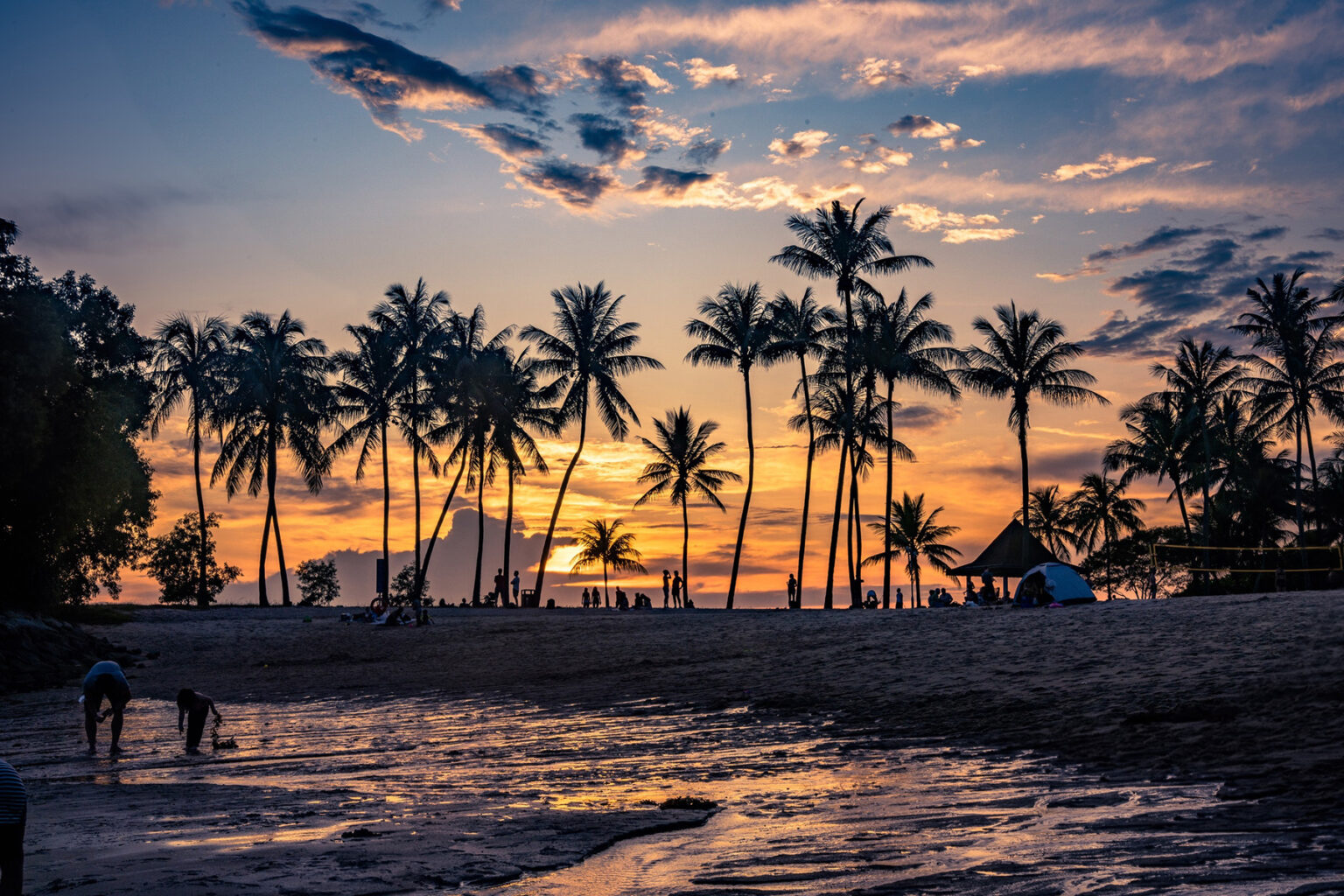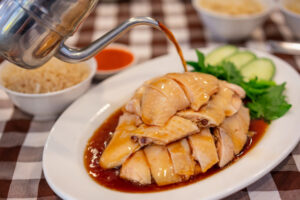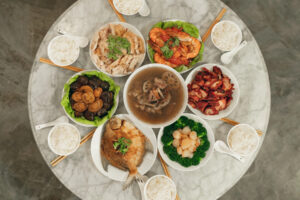One of the best things about moving to a new city is discovering its many facets. Singapore packs a lot of punch in its tiny geographic space, from incredible restaurants and kid-friendly attractions to historical sites and intriguing neighborhoods.
Of course, most people already know about Marina Bay Sands and the marvelous Gardens by the Bay. New expats, though, should check out the following places to visit in Singapore to get under the city’s polished skin:
- Explore Asian art at the National Gallery of Singapore
- Delve into Peranakan culture at The Intan
- Experience Chinese heritage in Chinatown
- Enjoy nature at The Botanic Gardens
- Commune with the animals at the Night Safari
- Enjoy Middle-Eastern culture at Kampong Glam
- Frolic across the Islands
- Enjoy fun in the sun at Sentosa
- Bask in the outdoors at Fort Canning Park
- Eat your way through Singapore’s Hawker Centers
Explore Asian art at the National Gallery of Singapore
Singapore’s former City Hall and Supreme Court buildings combine to create the architecturally arresting National Gallery of Singapore. The building is something to marvel at, of course, but the works inside are captivating too.
For new expats, this is one of the top places to visit in Singapore to begin understanding the area’s culture. With over 9,000 artworks, this is the largest public modern art collection in Southeast Asia and covers an array of the region’s art from the 19th century to today. Expect to see works by renowned artists like Cheong Soo Pieng, Chua Mia Tee, and S. Sudjojono.
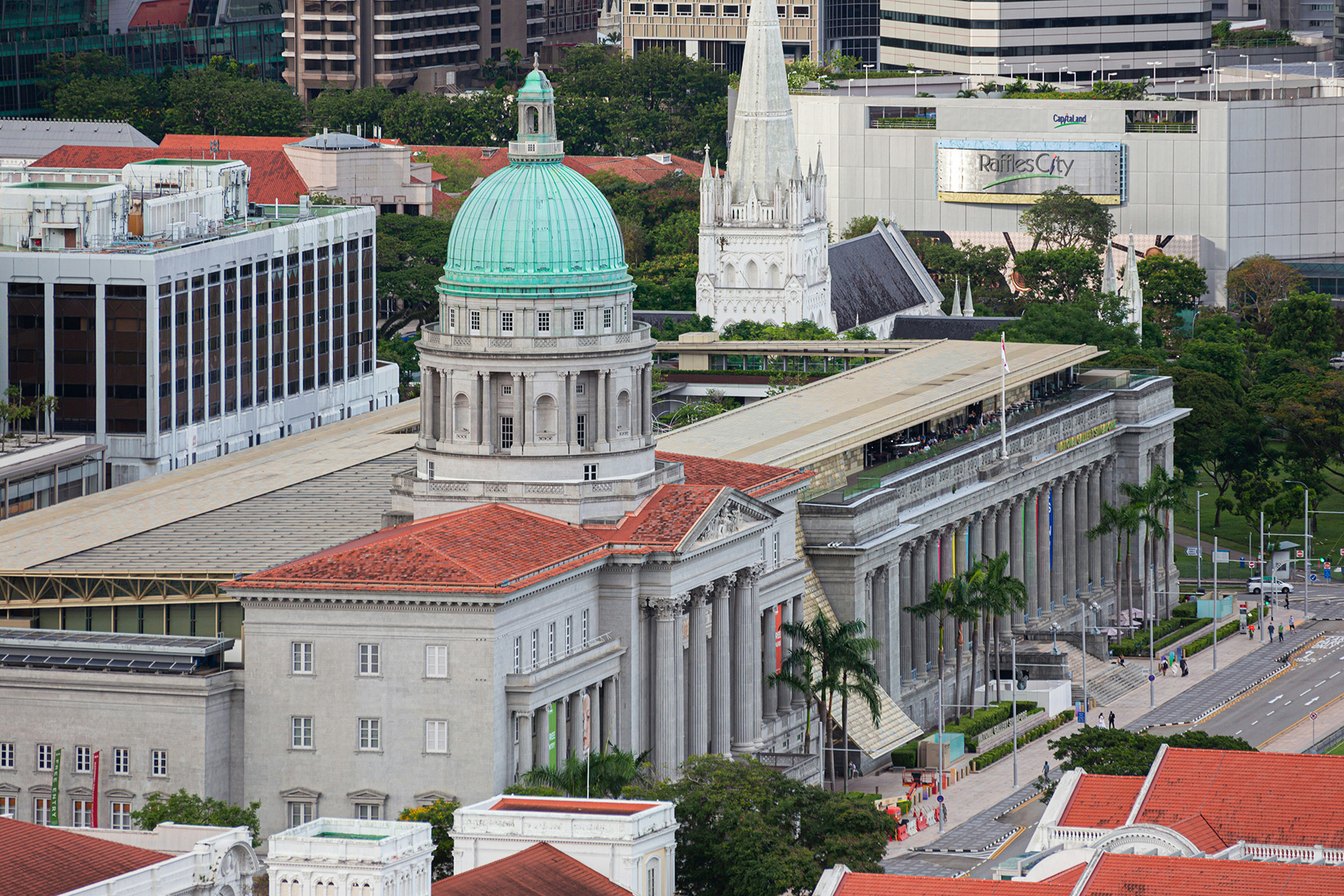
Swing by to see the permanent collection, and be sure to check out the temporary exhibitions – you might stumble across Vietnamese lacquer painting or Chinese calligraphy. While you are here, don’t miss the original judge’s chamber and courtroom, carefully retained in the Supreme Court wing. If you want some in-depth info, jump on one of the free tours or stop by for workshops and special presentations.
Delve into Peranakan culture at The Intan
Nestled in the heart of Singapore’s Joo Chiat neighborhood, The Intan is a private museum that showcases the vibrant Peranakan culture. Set within a beautifully restored Peranakan shophouse, the museum houses over 1,500 objects curated by owner Alvin Yapp over 30 years.
The Peranakans are a unique ethnic group descended from Chinese and Malay immigrants and have a distinct culture that blends influences from both sides. This rich heritage is on full display in a collection featuring everything from furniture and ceramics to textiles and jewelry. Look out for the stunning kasut manek (ornate beaded slippers) and sumptuous, handpainted enamel tiffin carriers.

Writer and local expert
Gayatri Bhaumik
Insider tip
The Intan is a private museum, so you must make an appointment to visit.
Experience Chinese heritage in Chinatown
In 1822, Sir Stamford Raffles allocated an area on the west bank of the Singapore River for a Chinese settlement in his Town Plan. It was originally called the Chinese Kampong (Malay for “village”) before becoming the now-familiar Chinatown.
These days, this vibrant neighborhood is a popular destination filled with history, great food, and cultural attractions. It is, naturally, one of the best places to visit in Singapore to delve into the local Chinese culture.
Because of its vast array of dining options, Chinatown is the perfect spot to explore Singapore’s dynamic drinking and dining scene.
There’s award-winning cuisine at Nouri, Burnt Ends, and Esquina, local eateries at Tong Ah Eating House, Spring Court, and Lian He Ben Ji Claypot, and all the hawker food you can handle at Chinatown Food Street and Maxwell Food Center. Wash it all down with the renowned mixology of establishments like Native, Stay Gold Flamingo, Atlas, or Nutmeg & Clove.
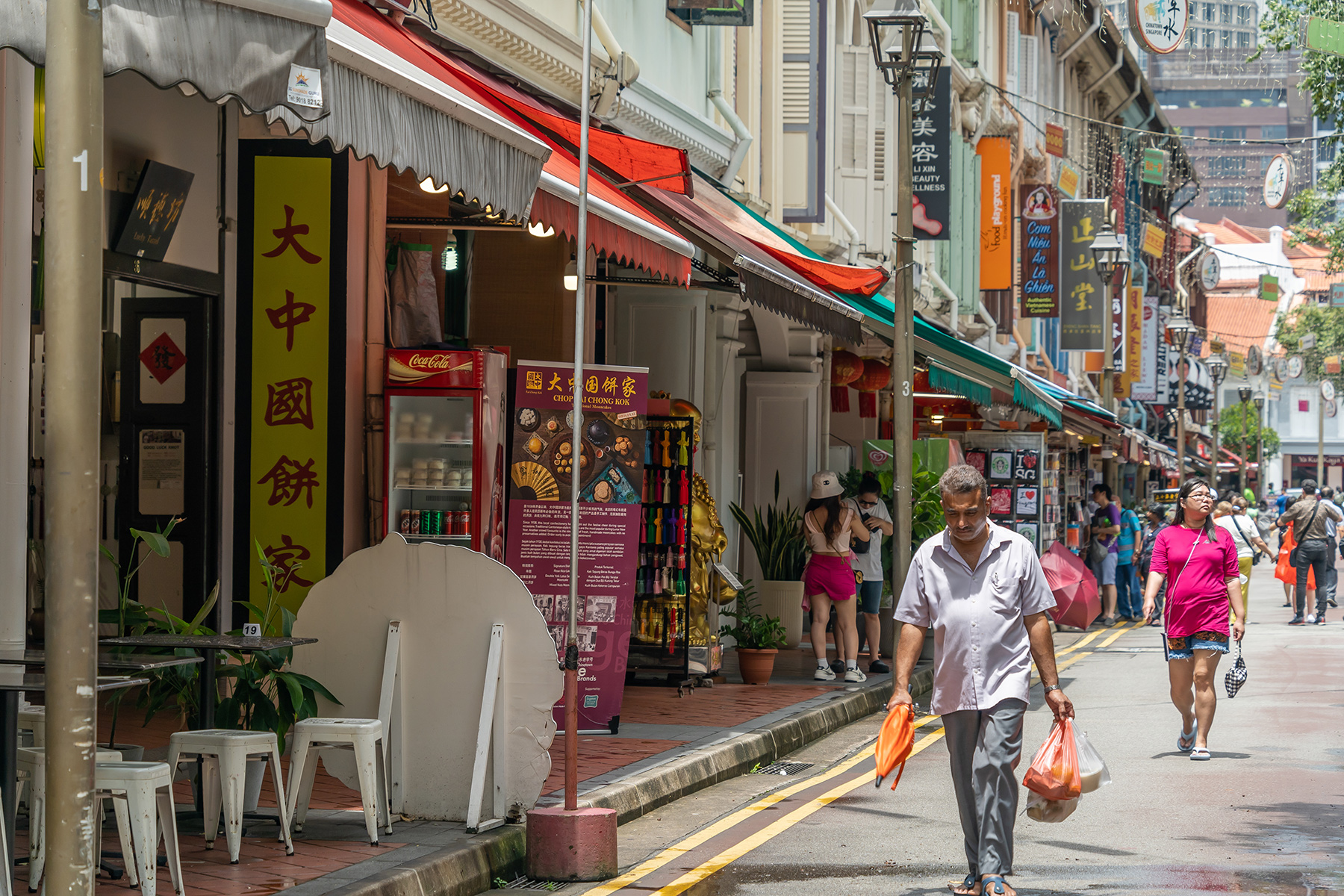
If you need to work off all that food, simply take a walk around to soak in the atmosphere. There are nostalgic street murals, a hodge-podge of handicraft stores, and even shops selling retro items. Chinese culture looms large here, with people playing mahjong and traditional Chinese medicine apothecaries still selling their wares. The Buddha’s Tooth Relic Temple is also worth a stop, as is the Chinatown Heritage Centre.
Enjoy nature at The Botanic Gardens
Created in 1859, Singapore Botanic Gardens is the country’s first UNESCO World Heritage site. It’s a stunning tropical homage to the region’s flora and fauna spread across 60 acres. Pass through the historic Tanglin Gate to immerse yourself in a world of natural wonder.
Visit the Ethnobotany Garden to explore the plants of Malaysia and Indonesia, explore the National Orchid Carden and its more than 1,000 species, and let the little ones run wild at the Jacob Ballas Children’s Garden.
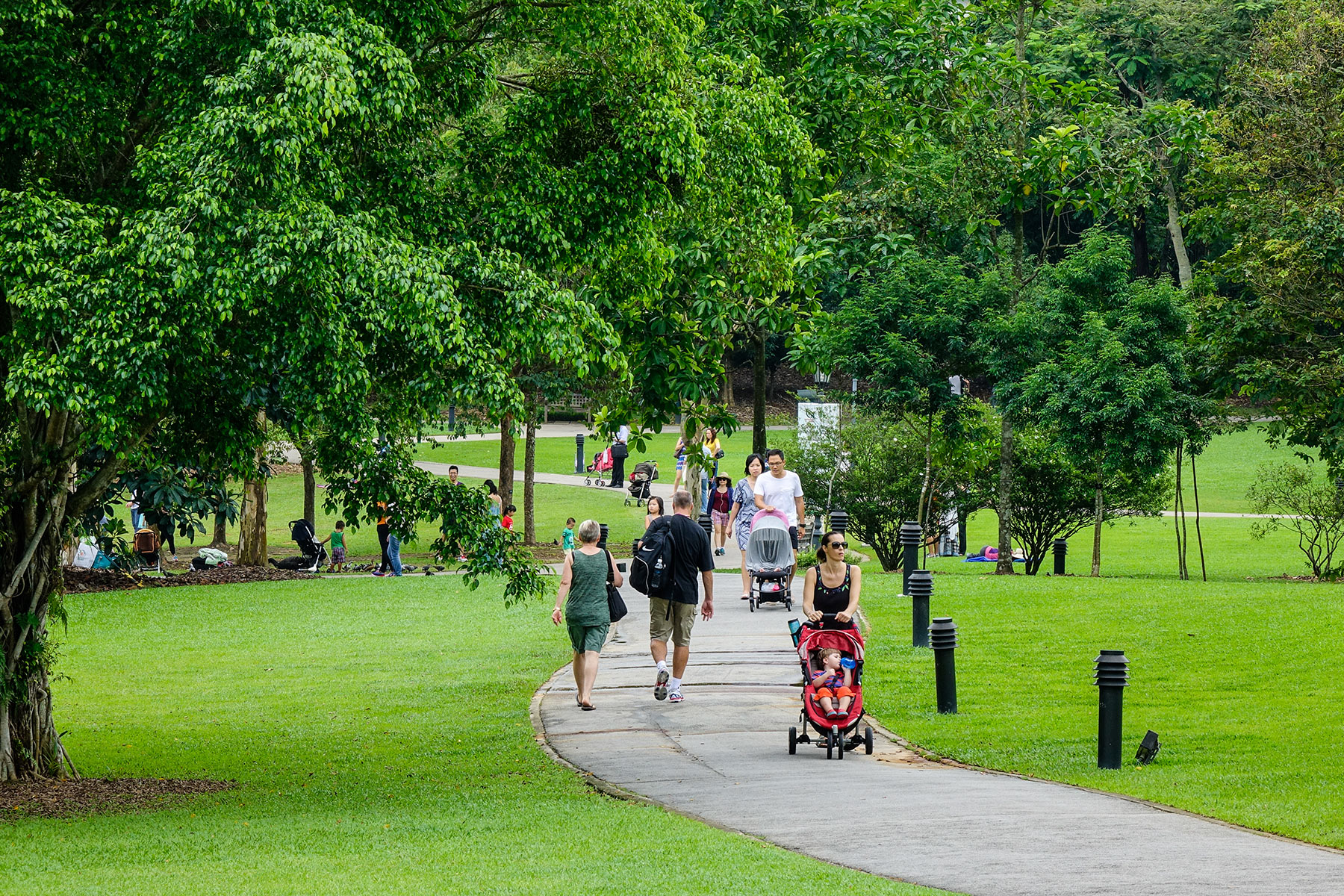
There are several restaurants on hand for when hunger hits – try Straits cuisine at Pangium or Asian-inflected European at Botanico. And, for those looking for a wedding venue, Burkill Hall, a restored Anglo-Malayan plantation house, is a stunning place to take your vows.
Commune with the animals at the Night Safari
Animal lovers – consider this one of Singapore’s greatest places to visit. Singapore is home to the world’s first nocturnal safari park, offering the chance to see over 2,500 animals get up to their nighttime activities.
Guests can explore the safari park’s 86 acres of areas inspired by the world’s different regions by tram. With over 130 species, you are sure to glimpse some perennial favorites, including lions, rhinos, and leopards. The park is also home to endangered species like the Asian elephants and Malayan tigers.
Of course, you can go (slightly) off the beaten path and walk around the reserve, too. Four-themed walks immerse guests in various habitats and offer quite the experience. Try the Fishing Cat Trail for a hike through Singapore’s jungles or the Leopard Trail to see Southeast Asia’s indigenous wildlife. Plan ahead to catch the “Creatures of the Night” show, where you can witness the antics of otters, binturongs, and other nocturnal animals. Parents, keep this in your pocket for a fun day out with the kids!
Enjoy Middle-Eastern culture at Kampong Glam
Another historic Singaporean enclave, Kampong Glam was originally given to Sultan Hussein Mohamed Shah and his family in 1824. Over the years, this became a popular neighborhood for Muslim immigrants to Singapore and developed into a bustling community with numerous shops and restaurants.
These days, visitors can enjoy a dynamic cultural exploration with the Malay Heritage Center, the iconic Sultan Mosque, and a plethora of mouthwatering delights and compelling wares. Along Arab street, old shophouses sell objets d’art like Persian carpets, Ottoman-style lamps, and textiles, while Bussorah Street features an array of authentic Turkish and Lebanese restaurants.
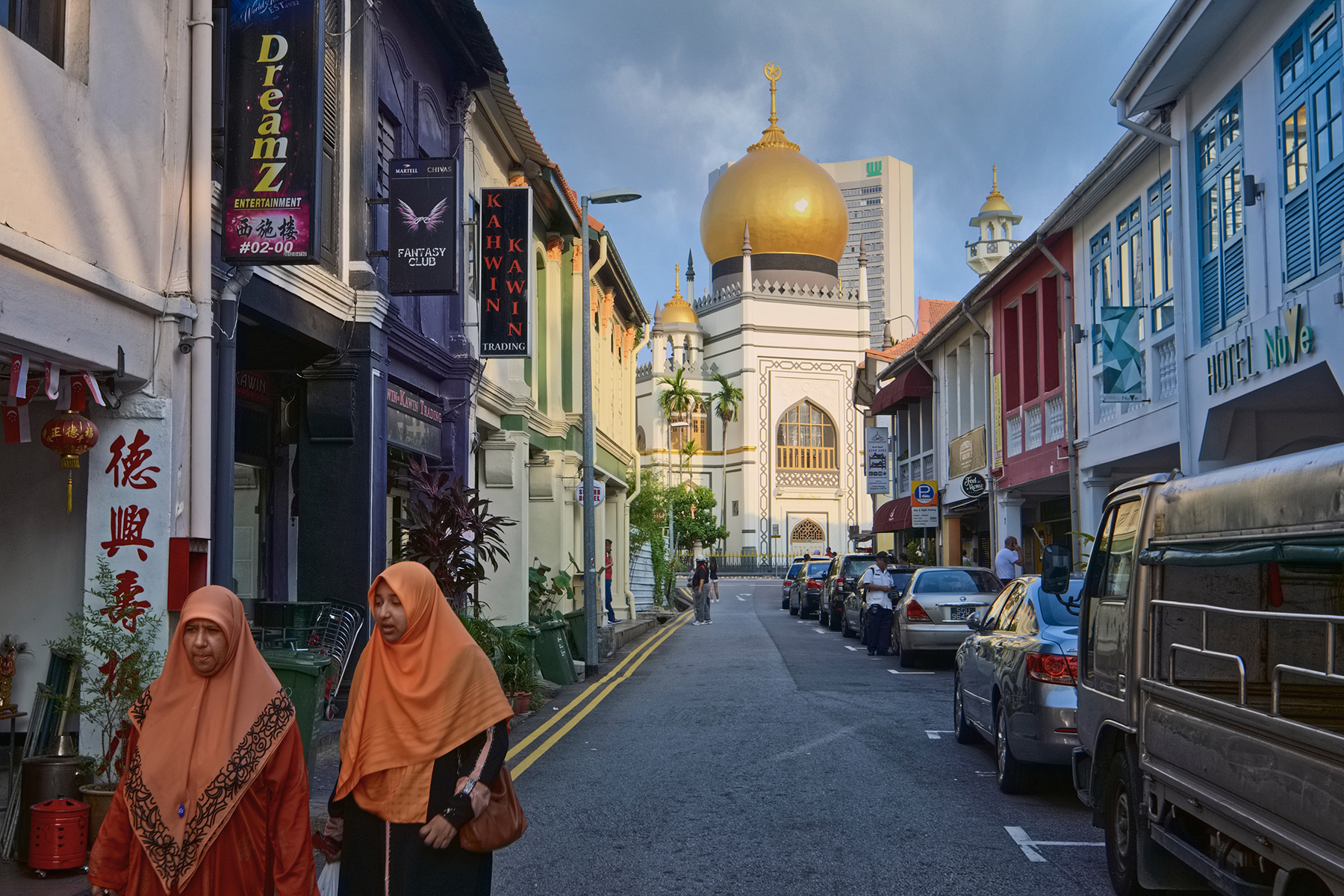
Of course, this is modern-day Singapore, so expect to see plenty of street art, chic little boutiques, such as Sifr Aromatics, and Swedish baked goods at Konditori.
Frolic across the Islands
Singapore might be an island in its own right, but did you know there is an entire archipelago of islands nearby? Jump on a ferry or boat, and within an hour, you can be lounging on a beach or exploring untamed wilds.
One of Singapore’s most popular offshore islands, Pulau Ubin, is a 1,020-hectare sprawl of verdant greenery and plentiful wildlife. Indulge in active adventures by taking a walk on the wild nature trails, kayaking through seas and mangroves, or cycling the island’s many routes.

For more sedate explorations, grab the binoculars for a spot of birdwatching, visit some of Singapore’s last remaining kampongs, or see the carpet anemones and fiddler crabs in the Chek Jawa Wetlands.
St John’s Island is similar to Hawaii as you can get near Singapore. Once, the island was used to quarantine infectious people, but these days, it’s a lush oasis where visitors swim in turquoise lagoons, laze on beaches, or work up a sweat on hiking routes. Visit nearby Lazarus Island, which offers white sand beaches and not even a single convenience store, if you need a little isolation.
Enjoy fun in the sun at Sentosa
These days, Sentosa is a sprawling, multifaceted resort island that boasts theme parks, water parks, luxury hotels, shops, restaurants, and much more. Once upon a time, though, this 1,236-acre island had a darker history. It was allegedly a site of many pirate battles and, during its time as a British military base, the setting of an epidemic that mysteriously swept through the staff at a signal station. Later, it was a prisoner-of-war camp under the Japanese Occupation.
Now, Sentosa is a vibrant weekend destination for Singaporeans and international visitors. The island features the S.E.A. Aquarium, Southeast Asia’s only Universal Studios, the Mega Adventure Park, two award-winning courses at the Sentosa Golf Club, and high-end shopping at the sprawling Luxury Fashion Galleria. Visitors can get a taste of the island’s history at Fort Siloso, party at Ola Beach Club, and even defy gravity at iFly Singapore.
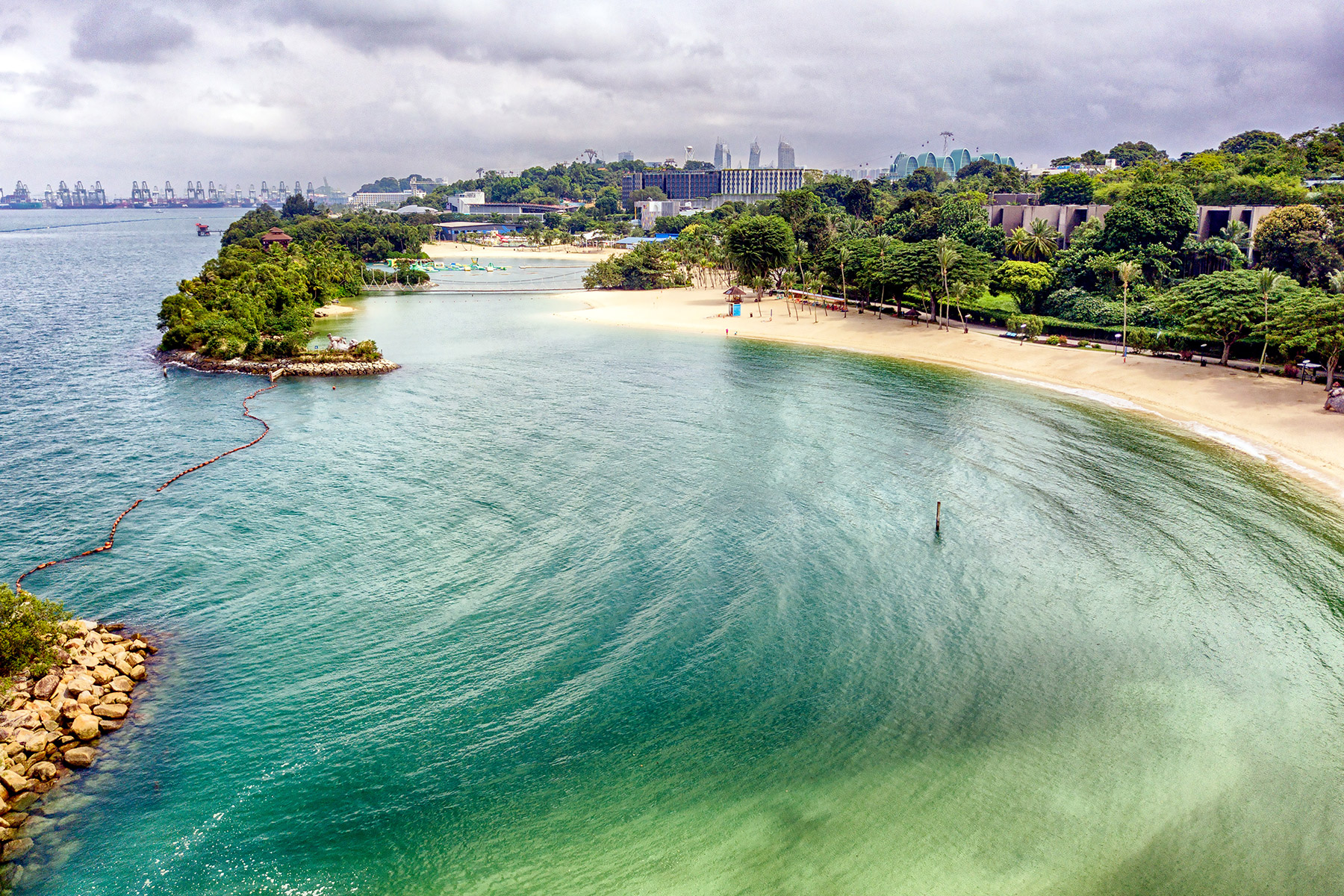
One of the most exciting places to visit is Resorts World Sentosa, a holistic lifestyle destination. Under one roof, visitors will find the Instagrammable Equarius Ocean Suites, the Hard Rock Hotel Singapore, and a slew of signature restaurants – including the Peruvian-Chinese CHIFA. It’s also home to the Adventure Cove Waterpark and a wealth of shops.
No wonder visiting and resident parents consider this one of the best places in Singapore for quality family time!
Bask in the outdoors at Fort Canning Park
Fort Canning Park is an iconic green space to visit in the heart of Singapore. It’s also the perfect place to enjoy that tropical climate, and it houses many historic moments. It was home to kings in the 14th century.
Later, in the late 19th and early 20th centuries, it was the Headquarters of the Far East Command Center and British Army Barracks. During World War Two, it was also the site of the Japanese surrender in 1942.
Now, Fort Canning Park features nine distinct gardens, including Singapore’s first Botanic Garden, the archaeological Artisan’s Garden, and the multi-use Armenian Street Park.
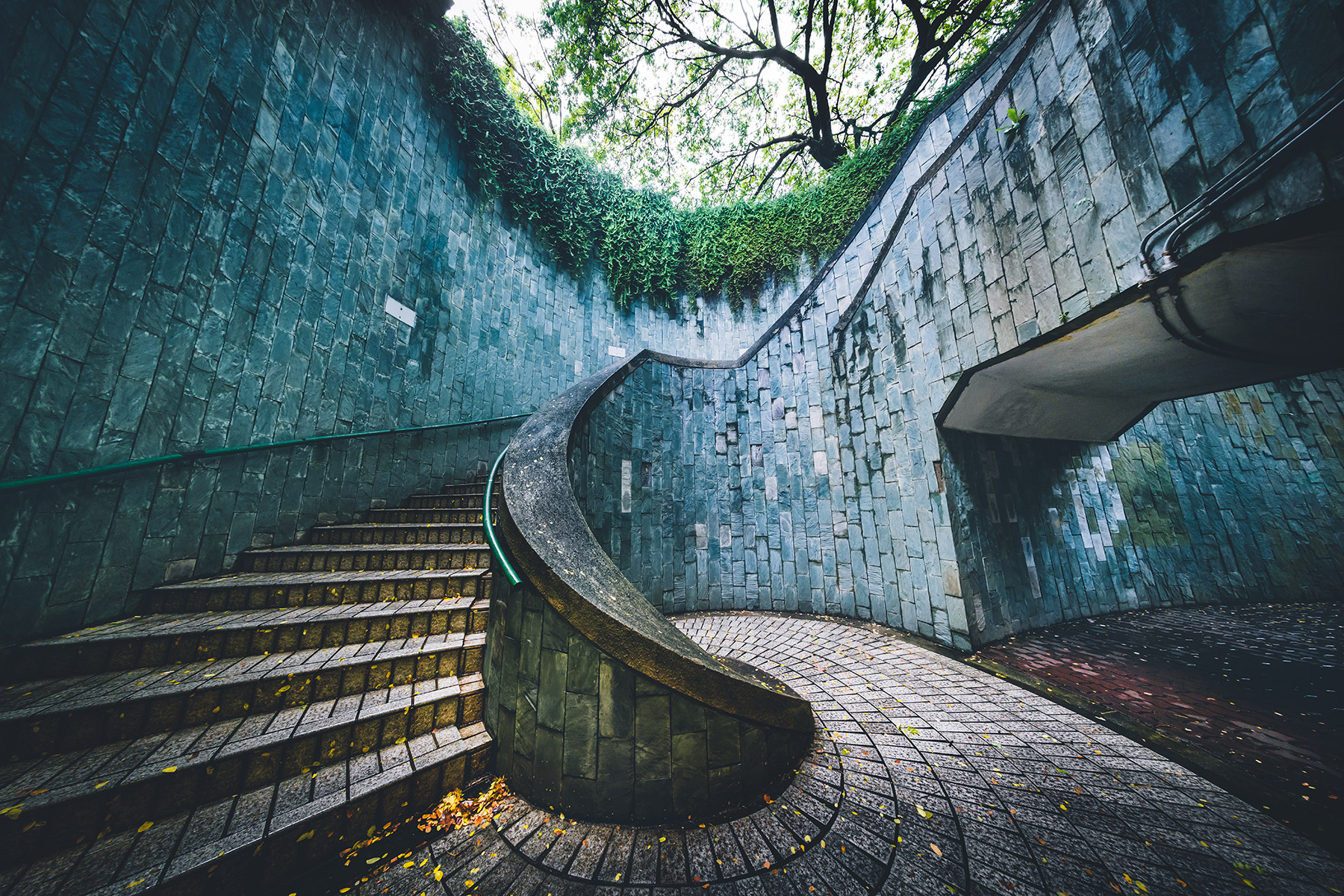
The park hosts numerous events on its sweeping lawns, such as “Shakespeare in the Park,” “Ballet Under the Stars,” and “Films at the Fort.” Hotel Fort Canning is also a chic boutique hotel – a nice place to visit and excellent for weddings in Singapore.
The park also hosts many notable historical sites, and history buffs will not want to miss them. The Fort Canning Heritage Gallery focuses on the area’s significance in Singaporean history. Meanwhile, Battlebox is a former underground British command center that recreates an important moment in the Battle of Singapore.
Eat your way through Singapore’s Hawker Centers
Dining out is a national sport in Singapore, and the champions of the scene are undoubtedly the city’s hawker centers. As a bustling port city in the 1800s, immigrants from across Asia – China, India, Malaysia, and Indonesia, especially – arrived. Singapore’s famously rich food scene formed from the diverse, distinctive cuisines they brought with them.
These culinary offerings were widely available across the city at makeshift food centers. After independence, the Singaporean government began regulating these hawkers, issuing licenses to create the now-iconic hawker centers.
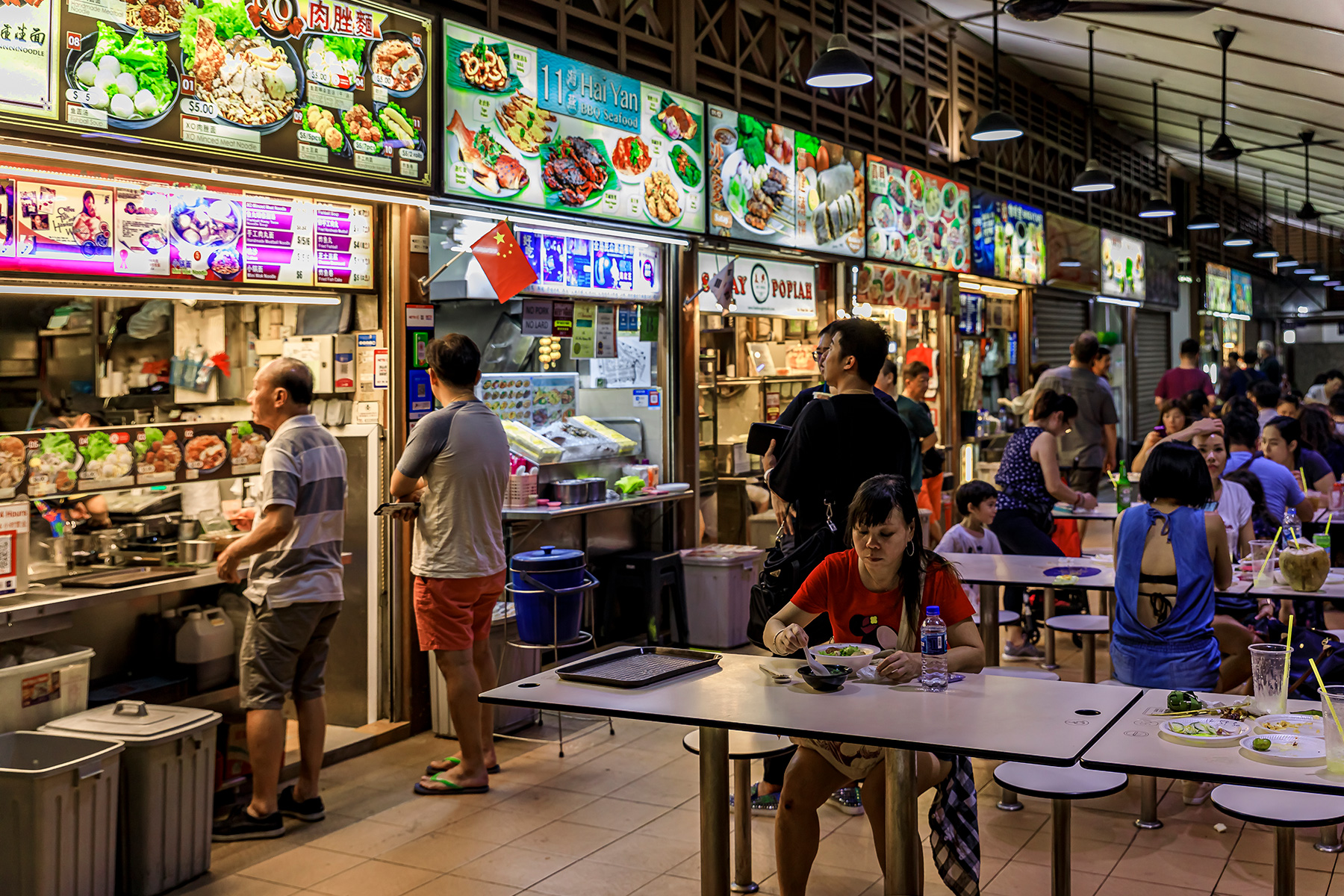
While there is a smorgasbord of hawker centers, some stand out for the best dishes and widest range of food. Old Airport Road Food Center has 150+ stalls, while Lau Pa Sat sits under a Victorian-era structure in the business district. Nearby, expats will recognize Newton Food Center from “Crazy Rich Asians.” Meanwhile, Tiong Bahru Market is a place well-worth visiting for its Art Deco structure (and its food, of course).
Wherever you choose to indulge in hawker culture, you’ll enjoy some of Singapore’s most iconic dishes. From satay to nasi lemak and char kuay teow, savor a veritable feast spanning Singapore’s rich culinary heritage.
